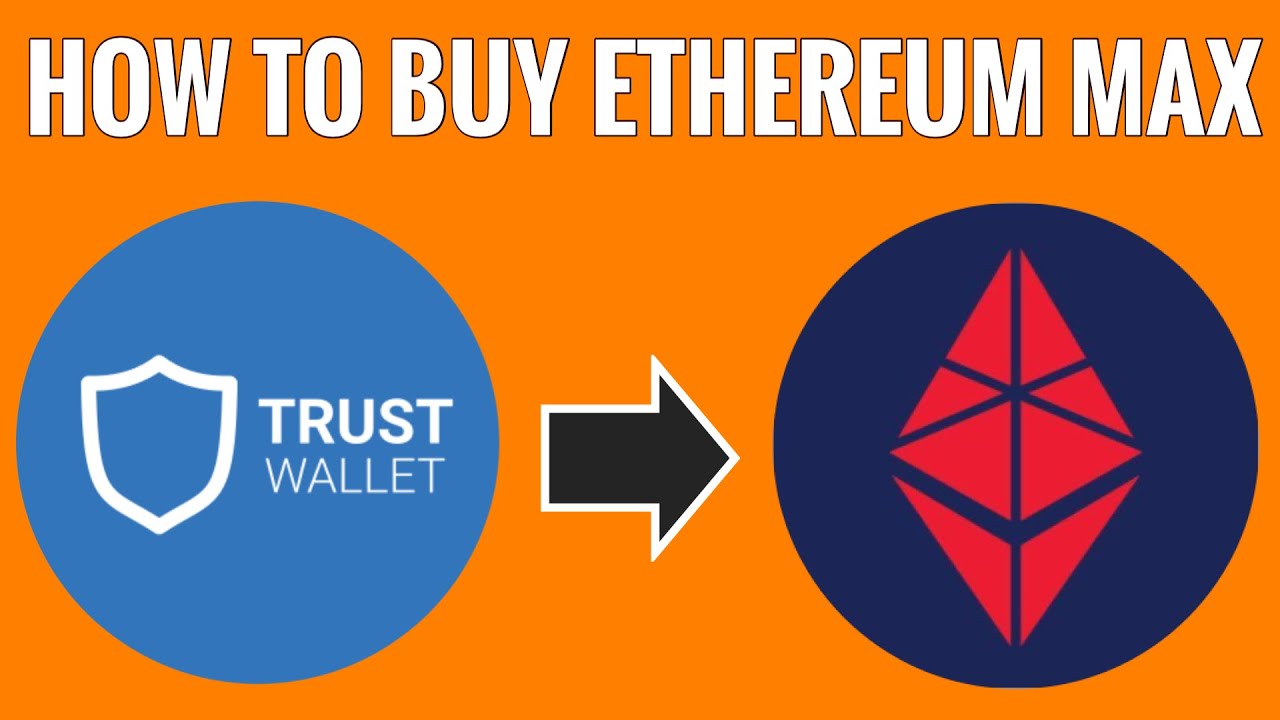Introduction
Welcome to the world of cryptocurrency, where digital assets like Bitcoin and Ethereum are transforming the way we conduct financial transactions. If you’ve found yourself holding Ethereum and are considering swapping it for Bitcoin, this article is here to guide you through the process.
Ethereum and Bitcoin are two of the most popular cryptocurrencies, each with its own unique features and capabilities. Ethereum, often referred to as “digital oil,” serves as a decentralized platform for building smart contracts and decentralized applications (DApps). On the other hand, Bitcoin is known as the pioneering cryptocurrency, acting as a digital store of value and a peer-to-peer electronic cash system. While both cryptocurrencies hold value and have their uses, you may have personal reasons for wanting to swap Ethereum for Bitcoin.
There are several reasons why individuals decide to swap Ethereum for Bitcoin. One possibility is that Bitcoin has a larger market cap and wider acceptance, making it more liquid and easier to convert into other currencies or tangible assets. Additionally, if you believe that Bitcoin will outperform Ethereum in the long run, swapping your Ethereum for Bitcoin might be a strategic move to maximize your investment potential. Whatever your reason may be, swapping Ethereum for Bitcoin requires you to follow a few simple steps.
In the following sections, we will break down the process of swapping Ethereum for Bitcoin into easy-to-follow steps. From choosing a cryptocurrency exchange to withdrawing your freshly swapped Bitcoin, we’ll provide you with the necessary guidance to navigate the process smoothly. So, grab your Ethereum wallet and let’s dive into the world of swapping cryptocurrencies!
Understanding Ethereum and Bitcoin
Before we delve into the process of swapping Ethereum for Bitcoin, it’s essential to have a solid understanding of both cryptocurrencies.
Ethereum: Launched in 2015 by Vitalik Buterin, Ethereum is an open-source blockchain platform that enables developers to create and deploy smart contracts and decentralized applications (DApps). The native cryptocurrency of the Ethereum blockchain is called Ether (ETH), which serves as a fuel for running applications and executing smart contracts. Ethereum’s ability to support programmable applications has made it a popular choice for developers and entrepreneurs looking to build decentralized solutions across various industries.
Bitcoin: Created by an anonymous person or group known as Satoshi Nakamoto in 2009, Bitcoin is the first decentralized cryptocurrency. It operates on a peer-to-peer network and relies on blockchain technology to facilitate secure and transparent transactions. Bitcoin’s primary purpose is to serve as a digital store of value and a decentralized alternative to traditional fiat currencies. With a limited supply of 21 million coins, Bitcoin has gained popularity as a hedge against inflation and a potential long-term investment.
Both Ethereum and Bitcoin have their unique advantages and use cases. While Ethereum focuses on enabling smart contracts and decentralized applications, Bitcoin primarily serves as a digital currency and a store of value. Understanding the fundamentals of these cryptocurrencies will help you make informed decisions when it comes to swapping Ethereum for Bitcoin.
It’s important to note that the value of cryptocurrencies can be volatile, and their prices may fluctuate based on market demand and external factors. Before proceeding with a swap, it’s recommended to conduct thorough research, analyze market trends, and consider consulting with a financial advisor for personalized advice.
Now that we have a basic understanding of Ethereum and Bitcoin, let’s explore the steps involved in swapping your Ethereum holdings for Bitcoin.
Why swap Ethereum for Bitcoin?
Swapping Ethereum for Bitcoin is a strategic decision that many cryptocurrency investors make based on their individual goals and market analysis. While Ethereum and Bitcoin are both prominent cryptocurrencies, there are several reasons why someone might choose to swap their Ethereum holdings for Bitcoin. Let’s explore some of these reasons below.
Larger Market Cap: Bitcoin has a significantly larger market capitalization compared to Ethereum. As the first and most well-known cryptocurrency, Bitcoin enjoys wider acceptance and liquidity in the market. Swapping Ethereum for Bitcoin can provide access to a larger pool of buyers and sellers, making it easier to convert Bitcoin into other currencies or tangible assets if needed.
Long-Term Investment Potential: Some investors believe that Bitcoin has better long-term investment potential compared to Ethereum. Bitcoin is often referred to as digital gold, with a limited supply of coins set at 21 million. This scarcity, along with growing adoption and institutional interest, has led some investors to view Bitcoin as a hedge against inflation and a store of value. Swapping Ethereum for Bitcoin can be a strategic move to capitalize on the potential growth of Bitcoin in the future.
Broader Acceptance: While both Ethereum and Bitcoin are widely accepted in the cryptocurrency world, Bitcoin tends to have broader acceptance in mainstream markets. Many online and brick-and-mortar businesses accept Bitcoin as a form of payment, making it more practical for everyday transactions. Swapping Ethereum for Bitcoin can provide you with a cryptocurrency that is more readily accepted by a wider range of merchants and service providers.
Investment Diversification: Swapping Ethereum for Bitcoin can be a part of an overall investment diversification strategy. By holding both cryptocurrencies in your portfolio, you can spread your risk across different assets. This way, you won’t be overly reliant on the performance of a single cryptocurrency. Diversification can help minimize potential losses and increase the potential for gains.
It’s important to note that these reasons are not exhaustive, and individuals may have their own unique motivations for swapping Ethereum for Bitcoin. Before making any decisions, it’s crucial to conduct thorough research, stay updated on market developments, and consider seeking advice from a financial professional to align your investment strategy with your specific goals.
Now that we understand the reasons behind swapping Ethereum for Bitcoin, let’s move on to the step-by-step process of executing the swap.
Steps to Swap Ethereum for Bitcoin
Swapping Ethereum for Bitcoin involves a few simple steps that require you to have an account on a cryptocurrency exchange. Follow the step-by-step guide below to execute the swap successfully:
Step 1: Choose a Cryptocurrency Exchange
The first step is to choose a reliable cryptocurrency exchange that supports the swapping of Ethereum for Bitcoin. Look for reputable exchanges with a user-friendly interface and robust security measures.
Step 2: Create an Account
Create an account on the chosen cryptocurrency exchange by providing the necessary information and completing the registration process. Make sure to use a strong, unique password to secure your account.
Step 3: Complete Identity Verification
Most cryptocurrency exchanges require users to complete a Know Your Customer (KYC) process to comply with regulatory requirements. Follow the instructions provided by the exchange to verify your identity by submitting the required documents.
Step 4: Deposit Ethereum
Once your account is set up and verified, navigate to the deposit section of the exchange. Generate a unique Ethereum wallet address and transfer your Ethereum holdings from your personal wallet to the exchange wallet.
Step 5: Place a Trade Order
After the Ethereum deposit is confirmed, proceed to the trading section of the exchange. Here, you can place a trade order to swap your Ethereum for Bitcoin. Specify the amount of Ethereum you want to swap and select the “Ethereum to Bitcoin” trading pair.
Step 6: Wait for the Trade to Complete
Once the trade order is placed, the exchange will match your order with other traders looking to swap Bitcoin for Ethereum. Wait for the trade to complete, which may take a few minutes to several hours, depending on market conditions and liquidity.
Step 7: Withdraw Bitcoin
Once the trade is executed successfully, navigate to the withdrawal section of the exchange and provide your Bitcoin wallet address. Withdraw the swapped Bitcoin from the exchange to your personal Bitcoin wallet for secure storage.
It’s important to note that the timeframe and fees associated with swapping Ethereum for Bitcoin may vary depending on the exchange and market conditions. It’s recommended to compare different exchanges to find the most competitive rates and favorable trading options.
By following these steps, you can seamlessly swap your Ethereum holdings for Bitcoin and participate in the dynamic world of cryptocurrencies.
Step 1: Choose a Cryptocurrency Exchange
Choosing the right cryptocurrency exchange is a critical first step in swapping Ethereum for Bitcoin. With numerous exchanges available, it’s important to consider factors such as security, user interface, trading fees, supported cryptocurrencies, and customer support. Here are some key points to consider when selecting a cryptocurrency exchange:
Reputation and Security:
Research the reputation of the exchange within the cryptocurrency community. Look for exchanges that have a proven track record of security measures, including two-factor authentication, cold storage, and regular security audits. This will help ensure that your funds and personal information are well protected.
User Interface and Experience:
Consider the user interface and experience offered by the exchange. The platform should be intuitive, easy to navigate, and provide a seamless trading experience. Look for features such as real-time market data, order books, and trading charts to help you make informed trading decisions.
Trading Fees:
Examine the fee structure of the exchange. Different exchanges have varying fee models, such as maker-taker fees or fixed fees per trade. Calculate the fees associated with your trading volume to ensure they align with your trading strategy.
Supported Currencies:
Check if the exchange supports both Ethereum and Bitcoin. While most exchanges offer major cryptocurrencies, it’s essential to verify that the specific pairing you require is available on the platform.
Liquidity:
Liquidity refers to the ease with which an asset can be bought or sold on an exchange. Look for exchanges with high liquidity for the Ethereum to Bitcoin trading pair. A higher liquidity ensures that you can execute your trades quickly and at competitive rates.
Customer Support:
Consider the availability and responsiveness of customer support. Look for exchanges that offer multiple channels of customer support, such as live chat, email, or phone. Prompt and efficient customer support can be crucial in resolving any issues you may encounter during the swap process.
Take the time to compare and research different cryptocurrency exchanges before making a decision. Read user reviews, seek recommendations from trusted sources, and consider the specific features that matter most to you in an exchange.
Remember, your chosen exchange will play a vital role in ensuring a smooth and secure transaction as you swap Ethereum for Bitcoin. So, choose wisely to set the foundation for a successful swap process.
Step 2: Create an Account
Once you have selected a cryptocurrency exchange to carry out the swap from Ethereum to Bitcoin, the next step is to create an account on the chosen platform. Follow these guidelines to create your account:
Visit the Exchange Website:
Go to the official website of the cryptocurrency exchange you have chosen. Make sure to access the legitimate website to avoid phishing attempts or fraudulent platforms.
Click on ‘Sign Up’ or ‘Register’:
Look for the ‘Sign Up’ or ‘Register’ button on the exchange’s homepage. Click on it to begin the registration process.
Provide Personal Information:
Fill in the required information, which typically includes your full name, email address, and a secure password. Ensure that your password is strong and unique to protect your account from unauthorized access.
Accept Terms and Conditions:
Read and understand the terms and conditions of the exchange. Tick the checkbox to indicate your acceptance of the terms before proceeding. It is essential to be familiar with the exchange’s rules and policies.
Verify Email:
After submitting your registration information, the exchange will send a verification email to the address you provided. Go to your email inbox and click on the verification link to confirm your email address. This step is necessary to activate your account.
Set Up Two-Factor Authentication (2FA):
Enable two-factor authentication for an added layer of security. This typically involves linking your account to a mobile app, such as Google Authenticator or Authy, which will generate a unique code to authenticate your login attempts.
Confirm Account Creation:
After completing the necessary steps, your account should be created successfully. The exchange may display a confirmation message or redirect you to the login page.
It’s important to note that each cryptocurrency exchange may have specific requirements and additional verification steps for account creation. Some exchanges may request further details, such as address verification or identity documents, to comply with Know Your Customer (KYC) regulations. Be prepared to follow the additional steps, if required, to fully activate your account.
Creating an account on a cryptocurrency exchange is a crucial step in the process of swapping Ethereum for Bitcoin. It provides you with a platform to securely manage your funds and conduct cryptocurrency transactions. Take the time to ensure that you select a reputable exchange and set up your account with strong security measures in place.
Step 3: Complete Identity Verification
Once you have created an account on the cryptocurrency exchange of your choice, the next step to swap Ethereum for Bitcoin is completing the identity verification process. Cryptocurrency exchanges are often required to comply with regulatory standards and anti-money laundering (AML) policies, which necessitate verifying the identity of their users. Follow these essential steps to complete the identity verification process:
Access the Verification Section:
Log in to your cryptocurrency exchange account and navigate to the verification or account settings section. Look for the option related to identity verification or KYC (Know Your Customer) verification.
Provide Personal Information:
Depending on the exchange’s requirements, you will need to provide personal information, which may include your full name, date of birth, residential address, and nationality. Ensure that the information you provide matches your legal identification documents.
Upload Identification Documents:
Most exchanges will request scanned or photographed copies of your identification documents for verification. The accepted documents may include a government-issued identification card, passport, or driver’s license. Make sure the copies are clear, legible, and meet the exchange’s specified requirements for file size and format.
Take a Selfie (Selfie Verification):
Some exchanges may require you to take a selfie or a photo of yourself holding your identification document next to your face. This is done to ensure that the person submitting the documents is the same individual whose identity is being verified.
Submit the Documents:
Once you have provided all the necessary information and uploaded the required identification documents, submit the information for review. The exchange’s verification team will assess the provided documents and information to verify your identity.
Await Verification Approval:
Identity verification can take varying amounts of time, depending on the exchange and the volume of verification requests. It may take anywhere from a few minutes to several days for your verification to be approved. During this time, monitor your email and notifications from the exchange for any updates or additional information required from you.
Follow Up if Needed:
If your verification is not approved or if there are any issues with the documents provided, the exchange will usually request additional information or clarifications. Check your email and the verification portal regularly to address any outstanding issues and provide the requested information promptly.
Completing the identity verification process is crucial as it allows you to access the full functionality of the cryptocurrency exchange and comply with regulatory requirements. Ensure that the information and documents you provide are accurate and truthful, as inaccuracies can lead to delays or account suspensions.
Once your identity is successfully verified, you can proceed to the next steps of swapping Ethereum for Bitcoin on the chosen exchange.
Step 4: Deposit Ethereum
With your identity verified, you’re ready to proceed to the next step of swapping Ethereum for Bitcoin: depositing your Ethereum holdings into the cryptocurrency exchange. Follow these steps to deposit your Ethereum:
Locate the Deposit Section:
Log in to your cryptocurrency exchange account and navigate to the deposit or wallet section. Look for the option specifically related to Ethereum or ETH.
Generate a Deposit Address:
Click on the Ethereum deposit option, and the exchange will generate a unique Ethereum wallet address for you. This wallet address is specific to your account on the cryptocurrency exchange.
Copy the Deposit Address:
Copy the generated Ethereum wallet address provided by the exchange. Pay attention to avoid any typos or errors when copying the address, as this could result in the loss of your funds.
Open Your Personal Ethereum Wallet:
Open your personal Ethereum wallet, whether it’s a hardware wallet, software wallet, or an online wallet. Locate the option to send or withdraw Ethereum from your wallet.
Paste the Deposit Address:
Paste the Ethereum deposit address you copied from the cryptocurrency exchange into the recipient address field of your personal Ethereum wallet. Double-check that you have pasted the correct address before proceeding.
Specify the Amount to Deposit:
Specify the amount of Ethereum you want to deposit into the exchange. Enter the exact amount or use the provided conversion tools to convert from fiat currency to Ethereum if necessary.
Confirm and Initiate the Transfer:
Review the details of the transaction, including the amount and recipient address, carefully. Once you are satisfied, confirm the transaction and initiate the transfer of Ethereum from your personal wallet to the exchange’s wallet address.
Wait for Confirmation:
After initiating the transfer, wait for the transaction to be confirmed on the Ethereum blockchain. This process typically takes a few minutes, but it can vary depending on network congestion. You can track the progress and status of the transaction using an Ethereum blockchain explorer.
Once the transaction is confirmed, the Ethereum will be credited to your account on the cryptocurrency exchange. You are now ready to proceed to the next steps and swap your Ethereum for Bitcoin.
It’s important to note that some cryptocurrency exchanges may require a minimum deposit amount or impose withdrawal fees. Familiarize yourself with the exchange’s deposit and withdrawal policies to avoid any unexpected charges.
By depositing Ethereum into the exchange, you are positioning yourself to execute the swap and convert your Ethereum holdings into Bitcoin.
Step 5: Place a Trade Order
Now that you have successfully deposited your Ethereum into the cryptocurrency exchange, you are ready to place a trade order to swap your Ethereum for Bitcoin. Follow these steps to execute your trade:
Navigate to the Trading Section:
Log in to your cryptocurrency exchange account and navigate to the trading section. Look for the trading interface or the option to buy and sell cryptocurrencies.
Select the Ethereum to Bitcoin Trading Pair:
In the trading interface, locate the trading pairs available on the exchange. Search for the Ethereum to Bitcoin trading pair, usually displayed as ETH/BTC or ETH-BTC. Select this trading pair to specify that you want to sell Ethereum and buy Bitcoin.
Choose the Order Type:
Decide on the type of order you want to place. Common order types include market orders and limit orders. A market order will execute the trade at the current market price, while a limit order allows you to set a specific price at which you want the trade to be executed.
Specify the Trade Details:
Enter the amount of Ethereum you want to sell or the amount of Bitcoin you want to buy. The trading interface will typically display indicators such as market price, bid price, and ask price to help you make informed decisions.
Review the Order:
Before finalizing the trade, review the order details, including the trade quantity, price, and any applicable trading fees. Ensure that the order parameters match your intention and confirm that you are satisfied with the trade terms.
Place the Trade Order:
Once you have reviewed everything, click on the “Place Order” button or a similar option to submit your trade order. The exchange will process your request and attempt to match your order with a counterpart who wants to trade Bitcoin for Ethereum.
Await Order Execution:
After placing the trade order, you must wait for the order to be executed. The execution time can vary depending on the market conditions, liquidity, and the specific trading exchange. It may take a few minutes to several hours for your order to be fully executed.
Monitor the Trade Progress:
Stay updated on the progress of your trade order. Some exchanges provide real-time order book information, allowing you to see the status of your trade in the market. You can also track your order in the trading interface or through notifications provided by the exchange.
Placing a trade order is a crucial step in the process of swapping Ethereum for Bitcoin. By following these steps, you are initiating the transaction and allowing the exchange to match your order with a suitable trading counterpart.
Once your trade order is fully executed, you will have successfully swapped your Ethereum holdings for Bitcoin. The next step is to withdraw your newly acquired Bitcoin to your personal wallet for safekeeping or further trading activities.
Step 6: Wait for the Trade to Complete
After placing a trade order to swap your Ethereum for Bitcoin, the next step is to patiently wait for the trade to complete. The duration of this step can vary depending on market conditions, liquidity, and the specific exchange you are using. Here’s what you need to do during this waiting period:
Monitor Trade Status:
Keep an eye on the status of your trade order. Most cryptocurrency exchanges provide a trade history or order book section where you can track the progress of your trade. You may also receive notifications or updates regarding the status of your order via email or within your account dashboard.
Understand Market Dynamics:
While waiting, it’s a good idea to familiarize yourself with the current market conditions and price movements of both Ethereum and Bitcoin. Keep an eye on news related to the cryptocurrency market, as this can impact the overall trading environment and the duration it takes for your trade to be executed. Understanding market dynamics can help you set realistic expectations regarding the completion time of your trade.
Be Patient:
Cryptocurrency trading requires patience. It’s important to understand that the completion of your trade depends on various factors, many of which are beyond your control. Market volatility, trading volume, and the number of orders in the market can all influence the time it takes for your trade to be matched and executed.
Avoid Impulsive or Emotional Decisions:
During the waiting period, it is crucial to resist the temptation to make impulsive or emotionally driven decisions. Cryptocurrency markets can be volatile, and sudden price movements might trigger emotions like fear or greed. Stay focused on your original trade plan and avoid making any hasty decisions that could negatively impact your investment.
Seek Assistance if Needed:
If you encounter any issues or have concerns about the progress of your trade, don’t hesitate to seek assistance from the customer support team of the cryptocurrency exchange. They can provide updates, address any questions you may have, and offer guidance during this waiting period.
Remember, the duration of this step can vary widely. In some cases, the trade may be executed within minutes, while in other cases, it could take several hours. Stay informed, be patient, and trust the process. Once the trade is complete, you will be ready to proceed to the final step: withdrawing your newly acquired Bitcoin.
Step 7: Withdraw Bitcoin
Congratulations! Your trade to swap Ethereum for Bitcoin has been successfully executed. The final step is to withdraw your newly acquired Bitcoin from the cryptocurrency exchange to your personal Bitcoin wallet for secure storage. Here’s how to complete the withdrawal process:
Locate the Withdrawal Section:
Login to your cryptocurrency exchange account and navigate to the withdrawal or wallet section. Look for the option specifically related to Bitcoin or BTC.
Enter Your Bitcoin Wallet Address:
In your Bitcoin wallet, generate your unique Bitcoin wallet address. Ensure that you have copied the address correctly and double-check for any typos or errors.
Paste the Withdrawal Address:
Back in the exchange’s withdrawal section, paste your Bitcoin wallet address into the designated field. Verify that you have entered the correct wallet address before proceeding.
Specify the Amount to Withdraw:
Enter the amount of Bitcoin you wish to withdraw from the exchange. Consider any network fees that may be involved and ensure that you leave a sufficient balance in your exchange account to cover those fees.
Confirm the Transaction:
Review the withdrawal details, including the destination address and amount. Once you are certain everything is accurate, confirm the withdrawal transaction.
Verify the Withdrawal:
After confirming the transaction, the exchange may require you to complete an additional verification step, such as entering a verification code sent to your email or phone. Follow the instructions provided by the exchange to complete this step if necessary.
Wait for the Withdrawal Confirmation:
Once you have completed the withdrawal request, you will need to wait for the confirmation of the transaction. The time it takes for the withdrawal to be processed can vary depending on network congestion and the exchange’s internal processing time.
Monitor the Transaction:
While waiting for the withdrawal confirmation, you can monitor the transaction progress using a Bitcoin blockchain explorer. By entering your transaction hash or wallet address, you can track the movement of your Bitcoin from the exchange wallet to your personal wallet.
It’s important to note that transaction times and fees can vary based on network congestion, so it’s advisable to check the current network conditions and set an appropriate fee for timely processing. Additionally, ensure that your personal Bitcoin wallet is secure and that you have control over the private keys.
Once the withdrawal transaction is confirmed, you will find your Bitcoin safely transferred to your personal Bitcoin wallet. From here, you have full control over the funds and can hold, trade, or use your Bitcoin as desired.
Conclusion
Congratulations on successfully swapping your Ethereum for Bitcoin! You have navigated through the steps, from choosing a cryptocurrency exchange to withdrawing your newly acquired Bitcoin to your personal wallet. By following this guide, you have taken a significant step into the world of cryptocurrencies and diversified your digital asset portfolio.
Swapping Ethereum for Bitcoin is a strategic decision that depends on your investment goals and market analysis. Bitcoin’s larger market cap, wider acceptance, and potential as a long-term investment have led many individuals to make this trade. However, it’s crucial to conduct thorough research and consider your unique circumstances before engaging in any cryptocurrency trading.
Remember that the cryptocurrency market can be highly volatile, and prices can fluctuate rapidly. Stay informed about market trends, be mindful of risks, and consider consulting with a financial professional to align your trading strategy with your goals.
Additionally, always prioritize security and take necessary precautions to protect your cryptocurrency holdings. Use strong and unique passwords, enable two-factor authentication, and ensure that your personal wallets are backed up securely.
Lastly, never stop learning. The cryptocurrency landscape is dynamic and constantly evolving. Stay updated with the latest developments, new trading platforms, and emerging technologies to make informed decisions and maximize your potential as a cryptocurrency investor or trader.
Swapping Ethereum for Bitcoin is just one small part of the vast world of cryptocurrency. Explore other opportunities, technologies, and investment strategies to further expand your knowledge and potential in this exciting and rapidly growing field.

























